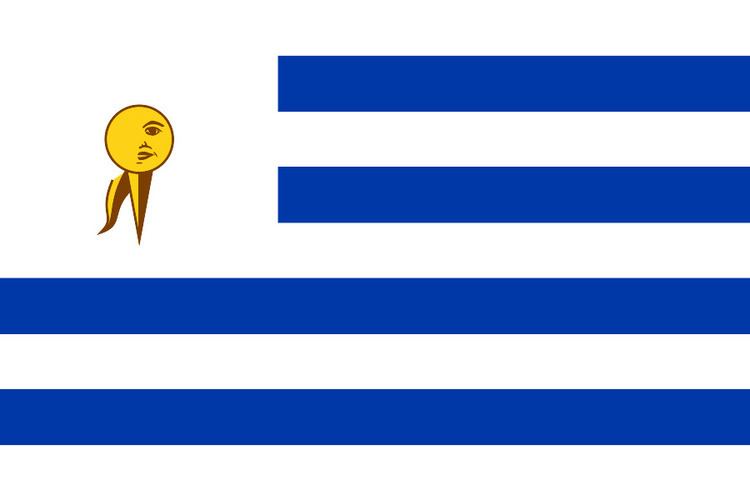Population below poverty line 9.7% (2014) Gross domestic product 55.71 billion USD (2013) GNI per capita 18,940 PPP dollars (2013) | Inflation (CPI) 7.9% (CPI, 2015 est.) Gini coefficient 45.3 (2010) GDP per capita 16,350.73 USD (2013) GDP growth rate 4.4% annual change (2013) | |
 | ||
GDP by sector agriculture: 7.5%; industry: 20.6%; services: 71.9% (2015 est.)[1][2] Labor force 1.7 million (2013 est.) Gross national income 64.52 billion PPP dollars (2013) Internet users 58.1% of the population (2013) | ||
The economy of Uruguay is characterized by an export-oriented agricultural sector and a well-educated work force, along with high levels of social spending. After averaging growth of 5% annually during 1996–98, in 1999–2002 the economy suffered a major downturn, stemming largely from the spillover effects of the economic problems of its large neighbors, Argentina and Brazil. In 2001–02, Argentine citizens made massive withdrawals of dollars deposited in Uruguayan banks after bank deposits in Argentina were frozen, which led to a plunge in the Uruguayan peso, a banking crisis, and a sharp economic contraction. Real GDP fell in four years by nearly 20%, with 2002 the worst year. The unemployment rate rose, inflation surged, and the burden of external debt doubled. Financial assistance from the IMF helped stem the damage. Uruguay restructured its external debt in 2003 without asking creditors to accept a reduction on the principal. Economic growth for Uruguay resumed, and averaged 8% annually during the period 2004-08. The 2008-09 global financial crisis put a brake on Uruguay's vigorous growth, which decelerated to 2.9% in 2009. Nevertheless, the country managed to avoid a recession and keep positive growth rates, mainly through higher public expenditure and investment, and GDP growth exceeded 7% in 2010.
Contents
- Map of Uruguay
- Currency
- Agriculture Textiles and Leather
- Mining
- Plastics
- Telecommunications
- Travel Tourism
- Specialties of Uruguay
- Raw Data
- References
Map of Uruguay
Currency
Uruguay has a partially dollarized economy. As of August 2008 almost 60% of bank loans use United States dollars, but most transactions use the Uruguayan peso.
Agriculture, Textiles and Leather
Throughout Uruguay's history, their strongest exporting industries have been beef and wool. In the case of beef exports, they have been boosted since Uruguay joined the Mercosur agreement in 1991 and the country has been able to reach more distant markets, such as Japan. In the case of wool exports, they have not been doing so well in recent years suffering from other competitors in the market like New Zealand and the fluctuations of its demand during the 2008/09 recession in the developed world. At the same time with timber refining being kept within the country, forestry has become a growth industry in the recent years.
Mining
Although this is a sector that does not make substantial contributions to the country's economy, in recent years there have been some activity in gold and cement production, and also in the extraction of granite.
Plastics
Due to two major investments made in 1991 and 1997, the most significant manufactured exports in Uruguay are plastics. These investments laid the way for most of the substantial exports of plastic-based products which has taken an important role in Uruguay's economy.
Telecommunications
In spite of having poor levels of investment in the fixed-line sector, the small size of Uruguay's population has enabled them to attain one of the highest teledensity levels in South America and reach a 100% digitalization of main lines. Although the telecommunications sector has been under a state monopoly for some years, provisions have been made to introduce liberalization and to allow for entry of more firms into the cellular sector.
Travel & Tourism
In 2013, travel and tourism accounted for 9.4% of the country's GDP. Their tourist industry is mainly characterized for attracting visitors from neighboring countries. Currently Uruguay's major attraction is the interior, particularly located in the region around Punta del Este. [3]
Specialties of Uruguay
"With a population of only three million, Uruguay has rapidly become Latin America's outsourcing hub. In partnership with one of India's largest technology consulting firms, engineers in Montevideo work while their counterparts in Mumbai sleep." - The New York Times, Sep 22, 2006
